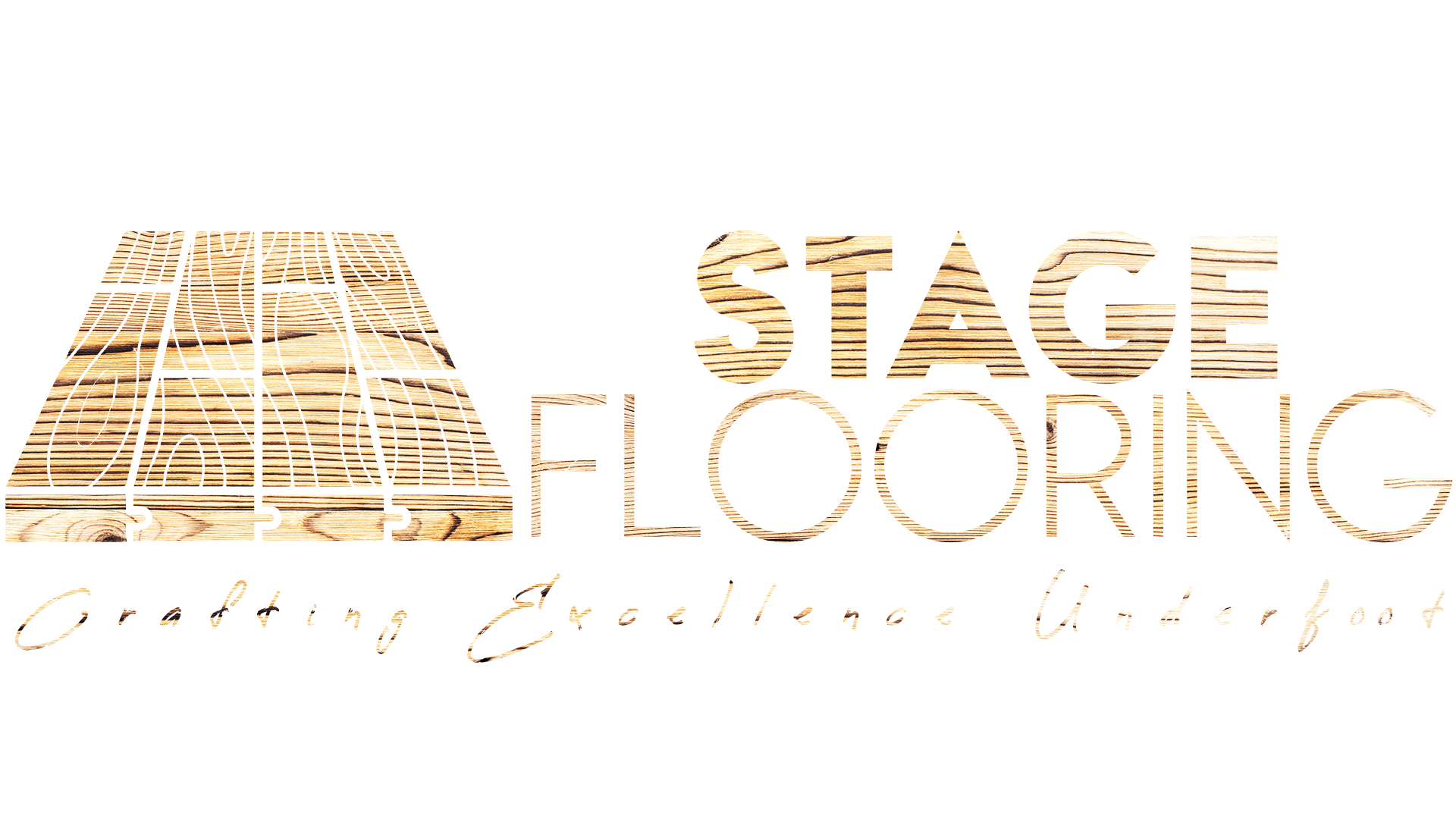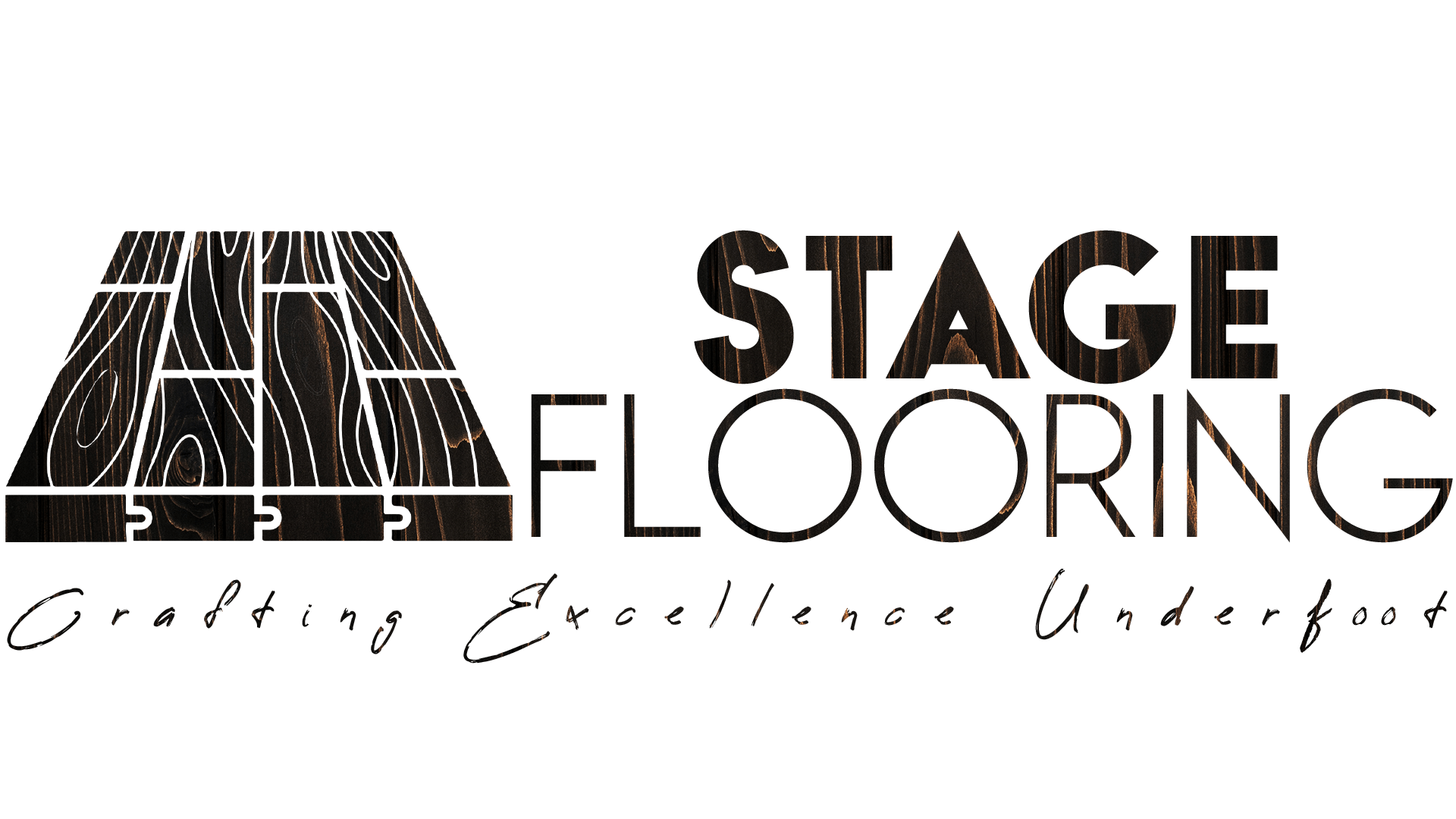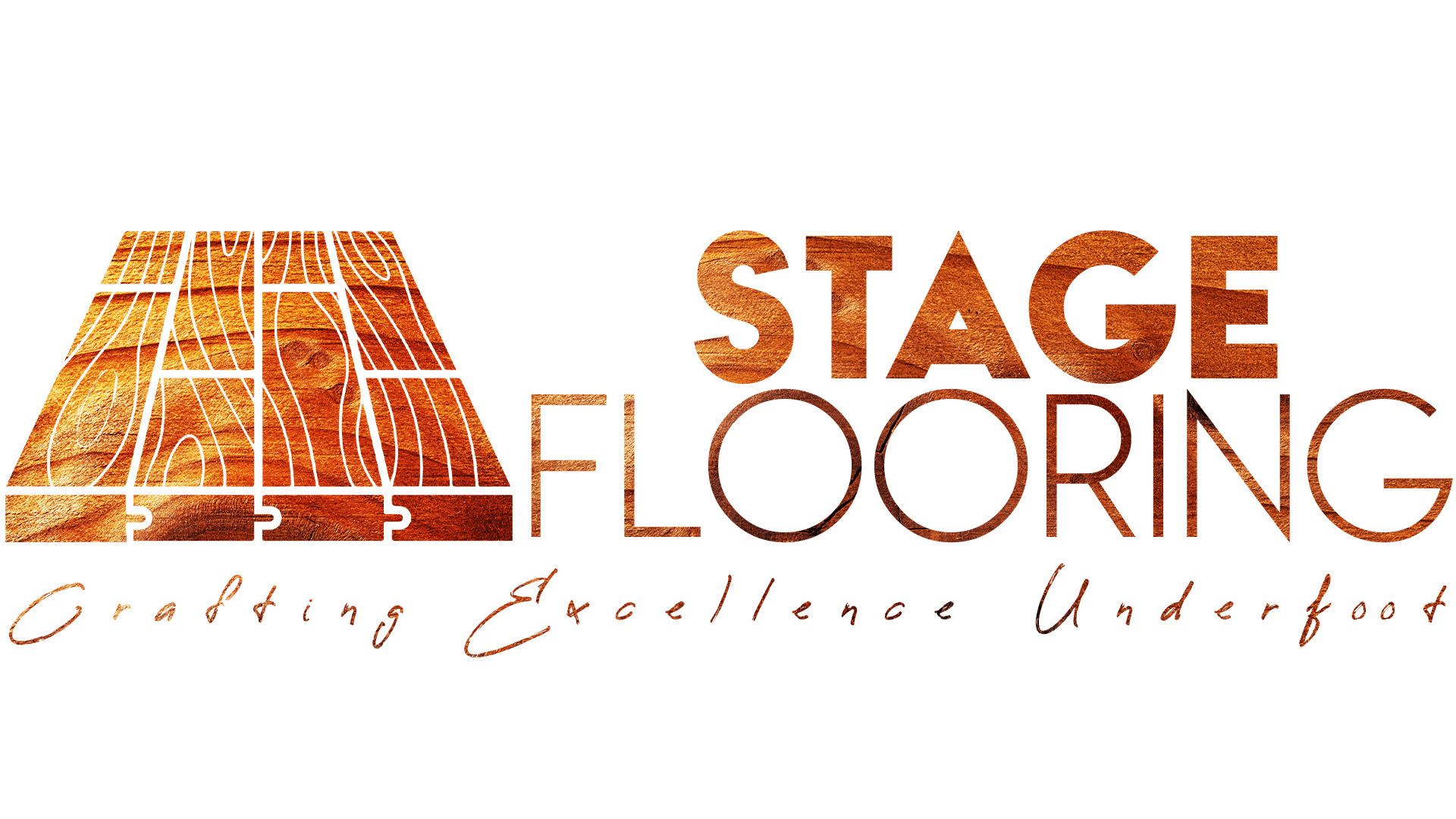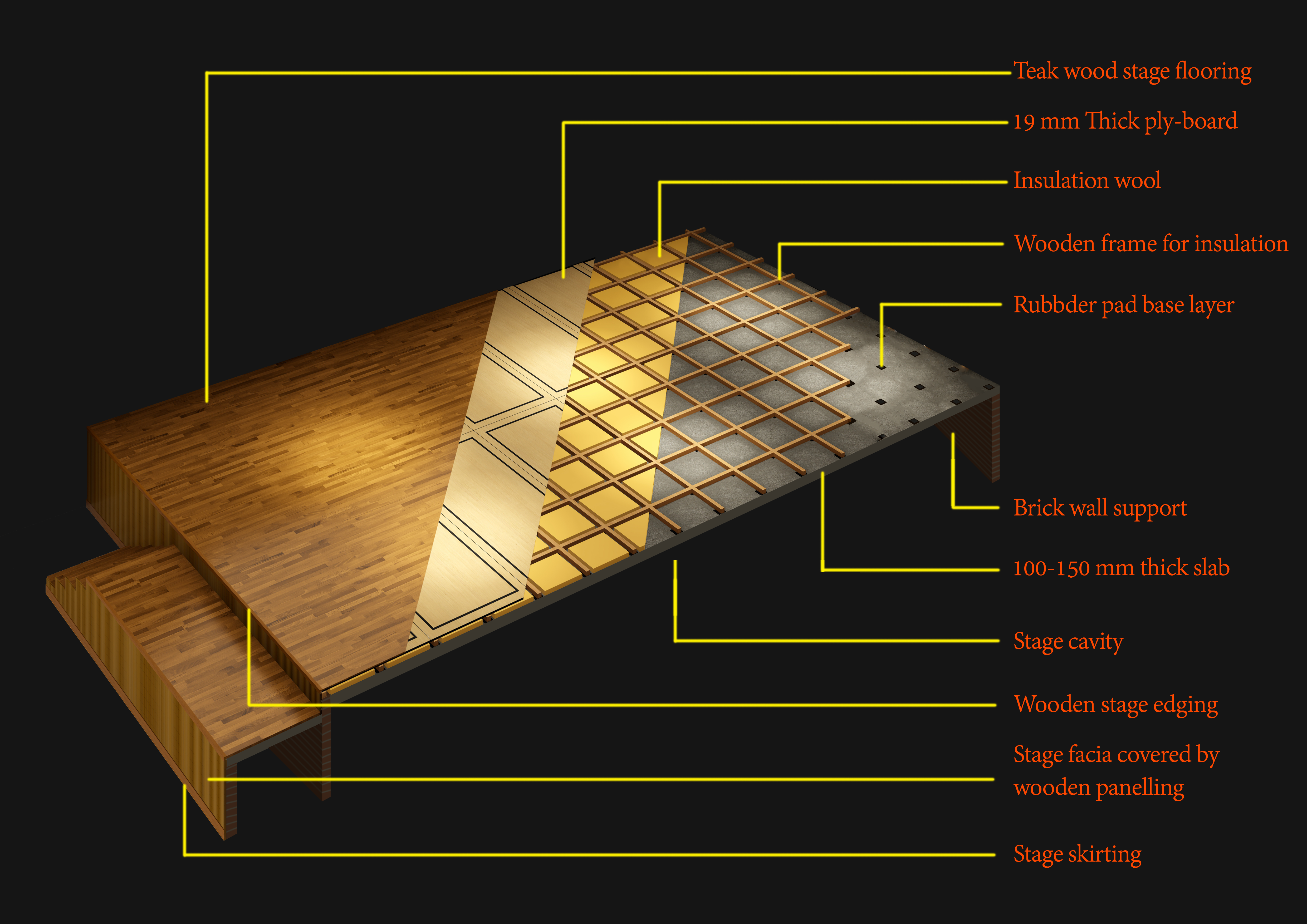Stage Flooring 101-Everything you Need to Know about Stage Flooring
Stage Flooring 101: A Comprehensive Guide
When it comes to building a stage, the flooring plays a crucial role in ensuring durability, aesthetics, and performance safety. Here’s a detailed breakdown of the components and materials used in constructing high-quality stage flooring.
1. Teak Wood Stage Flooring
Teak wood is an ideal choice for stage flooring due to its robustness, resistance to wear and tear, and natural beauty. Its high oil content makes it resistant to termites and other pests, ensuring longevity and low maintenance. The aesthetic appeal of teak wood with its rich, warm tones also adds an elegant touch to the stage.
2. 19 mm Thick Ply-board
Underneath the teak wood, a 19 mm thick ply-board provides a stable and smooth base. This thickness ensures that the ply-board can withstand significant weight and pressure, distributing it evenly to prevent any damage to the teak wood surface.
3. Insulation Wool
Insulation wool is placed beneath the ply-board to provide thermal and acoustic insulation. It helps in maintaining a comfortable temperature on the stage and reduces sound transmission, enhancing the acoustics of the performance space.
4. Wooden Frame for Insulation
A sturdy wooden frame is constructed to hold the insulation wool in place. This frame ensures that the insulation is evenly distributed and remains effective over time. It also adds structural integrity to the stage flooring.
5. Rubber Pad Base Layer
A rubber pad base layer is installed below the wooden frame to act as a shock absorber. This layer helps in reducing vibrations and impact noise, protecting the stage flooring and providing a comfortable surface for performers.
6. Brick Wall Support
To provide additional support and stability to the stage, brick walls are constructed around the perimeter. These walls help in bearing the load of the stage structure and preventing any shifting or settling over time.
7. 100-150 mm Thick Slab
A thick concrete slab, ranging from 100 to 150 mm, is laid as the foundational layer of the stage. This slab ensures a solid and level base, capable of supporting the entire stage structure and the activities that will take place on it.
8. Stage Cavity
A stage cavity is incorporated into the design to house various technical elements such as wiring, lighting controls, and sound equipment. This cavity keeps all these components concealed and organized, maintaining a clean and professional appearance on stage.
9. Wooden Stage Edging
Wooden stage edging is used to finish the edges of the stage, providing a smooth and polished look. This edging also helps in protecting the edges of the stage flooring from damage due to heavy foot traffic and equipment movement.
10. Stage Facia Covered by Wooden Panelling
The stage facia, or the front face of the stage, is covered with wooden paneling to match the overall aesthetic of the stage flooring. This paneling not only enhances the visual appeal but also adds an extra layer of protection to the structural elements of the stage.
11. Stage Skirting
Stage skirting is the final touch, often made of fabric or wood, that covers the lower part of the stage. It conceals the support structures, insulation, and any equipment stored underneath the stage, giving a clean and finished look.
Conclusion
Constructing a high-quality stage involves careful consideration of various materials and components to ensure durability, safety, and aesthetics. From the elegant teak wood surface to the robust support structures, each element plays a vital role in creating a performance space that meets the demands of both performers and audiences. By following these guidelines, you can achieve a stage flooring that not only looks great but also stands the test of time.
For more information or to discuss your stage flooring needs, please contact us at:
Stage Works: C-19, Yadav Nagar, Samaypur, Delhi, 110042
Telephone: +919015060000, +919555060000, 1800 200 6000 , info@stageflooring.in

Stage Flooring offers an extensive collection of premium, customizable flooring options designed to turn your visions into reality.
Contact Info
- 137, Vikash Nagar, Deepak Vihar, Uttam Nagar, New Delhi, Delhi, 110059
- (+91) 95550 60000
- (+91) 90150 60000
- info@stageflooring.in
Free Estimation
Stage Flooring © 2024. Powered by Stage Works
Discover Exceptional Stage Flooring with StageFlooring.in
Embark on a journey of stage transformation with Stage Flooring. Our stage flooring solutions are crafted to elevate the aesthetics and functionality of any performance space. Are you seeking high-quality stage flooring that enhances your venue’s ambiance? Look no further! Stage Flooring offers an extensive collection of premium, customizable flooring options designed to turn your visions into reality. Unleash your creativity and let us lay the foundation for your stage, surpassing all expectations for you and your audience.
—
Our Story: Crafting Excellence in Stage Flooring
Stage Flooring was founded by passionate individuals who recognized the need for superior stage flooring in the performance industry. From humble beginnings, we have grown into a leading provider of stage flooring, known for our commitment to quality and customer satisfaction. Our journey has been marked by a dedication to excellence, ensuring that every flooring solution we provide meets the highest standards of durability and elegance.
—
Stage Flooring’s Range of Customizable Flooring Options
Vinyl Stage Flooring
Experience the versatility and durability of our vinyl stage flooring. Available in various colors and patterns, these floors provide a reliable and attractive solution for any performance setting.
Marley Dance Floors
Our Marley dance floors are designed to offer a smooth and consistent surface for dancers. These floors are ideal for ballet, modern dance, and other performance arts, ensuring safety and performance quality.
Hardwood Stage Flooring
For a classic and elegant look, explore our hardwood stage flooring. Crafted from high-quality wood, these floors provide a timeless aesthetic that enhances any performance space.
Portable Stage Flooring
Need flexibility? Our portable stage flooring solutions offer ease of setup and breakdown, perfect for venues that require temporary yet professional flooring options.
—
Our Expertise: Transforming Performance Spaces
At Stage Flooring, we pride ourselves on transforming performance spaces with our top-notch flooring solutions. With meticulous attention to detail and a commitment to quality, our floors are tailored to meet your specific needs. From schools and theaters to large auditoriums and event venues, we provide solutions that elevate the experience for performers and audiences alike.
—
Get Started with Stage Flooring
Ready to enhance your performance space with premium stage flooring? Contact us today to schedule a consultation with our experts. We are here to help you choose the perfect flooring that aligns with your vision and requirements.
Phone: +91-90150 60000
Email: info@stageflooring.in
Address: 137, Vikash Nagar, Deepak Vihar, Uttam Nagar, New Delhi, Delhi, 110059
—
Frequently Asked Questions (FAQs)
Q: Can I customize the stage flooring to fit my specific requirements?
A: Yes, we offer a wide range of customization options to ensure your stage flooring perfectly matches your venue’s needs.
Q: Do you provide installation services?
A: Absolutely! Our team of professionals will handle the installation to ensure your flooring is set up flawlessly.
Q: Are your flooring solutions durable enough for heavy use?
A: Yes, our stage flooring options are designed to withstand heavy use and provide long-lasting performance.
Q: How do I get a quote for my project?
A: Contact us via phone or email with details about your project, and our team will provide a customized quote for your stage flooring.
Q: Do you offer eco-friendly flooring options?
A: Yes, we offer eco-friendly flooring solutions that are sustainable and meet environmental standards.
—
Elevate your performance space with Stage Flooring’s premium stage flooring solutions. Contact us today for a consultation or a quote. We’re here to help you create a stunning stage setting that captivates and inspires.
—
Stage Flooring in Delhi | Stage Flooring in Gurugram | Stage Flooring in Noida | Stage Flooring in Indore | Stage Flooring in Lucknow | Stage Flooring in Ghaziabad | Stage Flooring in Faridabad | Stage Flooring in Bengaluru | Stage Flooring in Chennai | Stage Flooring in Hyderabad | Stage Flooring in Kochi | Stage Flooring in Mysore | Stage Flooring in Coimbatore | Stage Flooring in Mangalore | Stage Flooring in Vijayawada | Stage Flooring in Vizag | Stage Flooring in Kolkata | Stage Flooring in Mumbai | Stage Flooring in Pune | Stage Flooring in Ahmedabad | Stage Flooring in Jaipur | Stage Flooring in Surat | Stage Flooring in Thane | Stage Flooring in Nagpur | Stage Flooring in Goa | Stage Flooring in Chandigarh | Stage Flooring in Trivandrum | Stage Flooring in Vadodara | Stage Flooring in Patna | Stage Flooring in Bhubaneswar | Stage Flooring in Guwahati | Stage Flooring in Bhopal | Stage Flooring in Nashik | Stage Flooring in Navi Mumbai | Stage Flooring in Dehradun | Stage Flooring in Kanpur | Stage Flooring in Madurai | Stage Flooring in Thrissur | Stage Flooring in Raipur | Stage Flooring in Ranchi | Stage Flooring in Rajkot | Stage Flooring in Pondicherry | Stage Flooring in Ludhiana | Stage Flooring in Srinagar | Stage Flooring in Salem | Stage Flooring in Agra | Stage Flooring in Amritsar | Stage Flooring in Jalandhar | Stage Flooring in Meerut | Stage Flooring in Gorakhpur | Stage Flooring in Jodhpur | Stage Flooring in Varanasi | Stage Flooring in Jammu | Stage Flooring in Kozhikode | Stage Flooring in Bikaner | Stage Flooring in Baramulla



